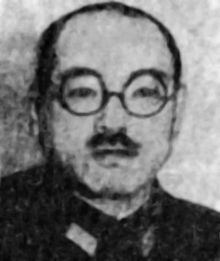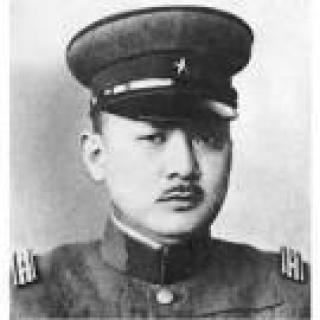Monarch Showa Resigned February 20, 1942 | Education Army War College Prime Minister Hideki Tojo Name Takashi Sakai | |
 | ||
Born October 18, 1887Hiroshima Prefecture, Japan ( 1887-10-18 ) Similar People Mark Aitchison Young, Christopher Maltby, Fu Zuoyi, Yan Xishan, Li Zongren | ||
Takashi sakai entreaty op 29 4 1990
Lieutenant-General Takashi Sakai (酒井 隆, Sakai Takashi, October 18, 1887 – September 30, 1946) was a lieutenant general in the Imperial Japanese Army during World War II, known for his role in the Battle of Hong Kong in late 1941.
Contents
- Takashi sakai entreaty op 29 4 1990
- Takashi sakai gm car 08
- Biography
- Career in China
- World War II
- Execution
- References

Takashi sakai gm car 08
Biography
Sakai was born in Kamo District, Hiroshima, now part of Hiroshima city. He was educated in military preparatory schools in Kobe and Osaka and graduated from the 20th class of the Imperial Japanese Army Academy in 1908, whereupon he was assigned to the IJA 28th Infantry Regiment. He graduated from the 28th class of the Army Staff College.
Career in China
In 1928, Sakai was stationed in Jinan, Shandong Province, China with the IJA 12th Infantry Regiment during the Jinan Incident and is believed by some Chinese historians to be responsible for the murder of Kuomintang army emissaries during negotiations on May 4, 1928. He was transferred to the Tientsin Garrison from 1929 to 1932. In 1932, Sakai was promoted to colonel and was assigned to the 5th Section military intelligence of the 2nd Bureau of the Imperial Japanese Army General Staff from 1932 to 1934.
As Chief of Staff of the Japanese China Garrison Army from 1934–1935, Sakai orchestrated a series of armed conflicts, which resulted in an armistice with the Chinese government which effectively gave Japan control of Hebei Province. He became commander of the IJA 23rd Infantry Regiment in 1936. Sakai was promoted to major general in 1937 and was appointed commander of the IJA 28th Infantry Brigade. He became a lieutenant general in 1939, and was assigned to the Coordination Bureau, Asia Development Group, Mengjiang Board from 1939 to 1940. He was also assigned to the Mongolia Garrison Army at this time.
Recalled to Japan in 1940, Sakai was briefly appointed commander of the Imperial Guards Depot Division.
World War II
Sakai was commander of the IJA 23rd Army stationed in Canton in November 1941. He was ordered to use the IJA 38th Division, which was normally under the Southern Expeditionary Army Group to capture Hong Kong, and was given a 10-day time limit.
On December 8, 1941, a few hours after the attack on Pearl Harbor, Japanese forces commanded by Sakai, and his Chief of Staff Tadamichi Kuribayashi, invaded Hong Kong. However, the subsequent Battle of Hong Kong did not proceed as quickly or as smoothly as Lieutenant-General Sakai had planned, and he was forced to request an extension to his deadline. Sir Mark Young, the Governor of Hong Kong, surrendered all British forces in Hong Kong on Christmas Day, after 18 days of fighting. Lt.-Gen. Sakai’s frustrations over the unexpectedly strong British resistance may have been reflected by the extreme brutality which characterized the campaign and subsequent occupation.
Sakai served as Japanese Governor of Hong Kong until February 20, 1942. He was recalled to Japan, and retired from active service in 1943.
Execution
After the end of the war, Sakai was accused of war crimes at the Chinese War Crimes Military Tribunal of the Ministry of National Defense in Nanking, found guilty and sentenced to death on August 27, 1946. Sakai was executed by firing squad on September 30.
